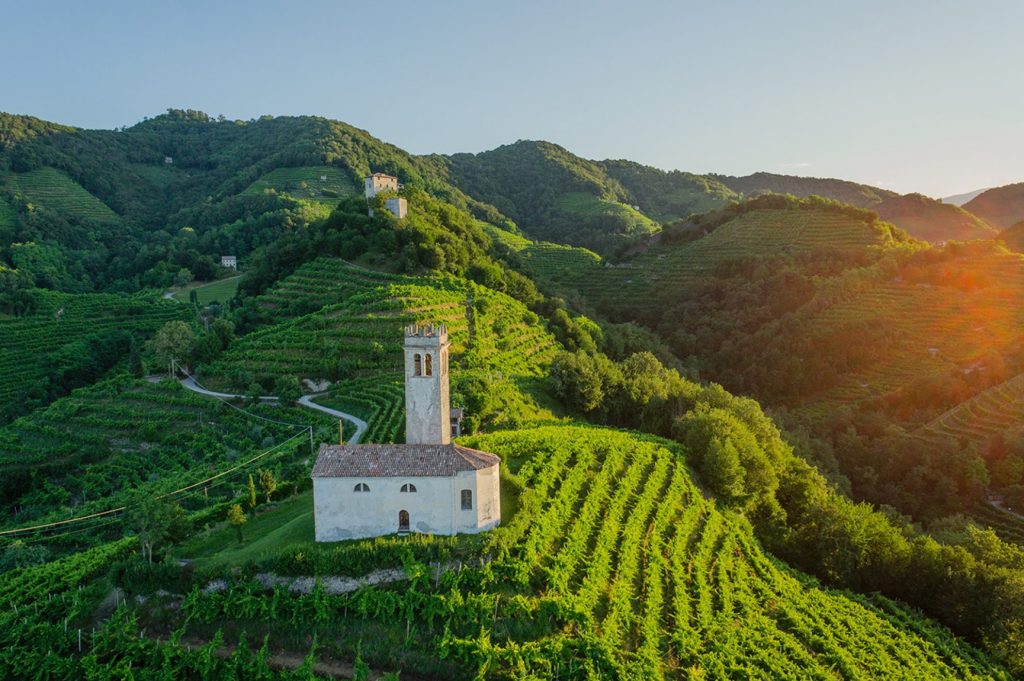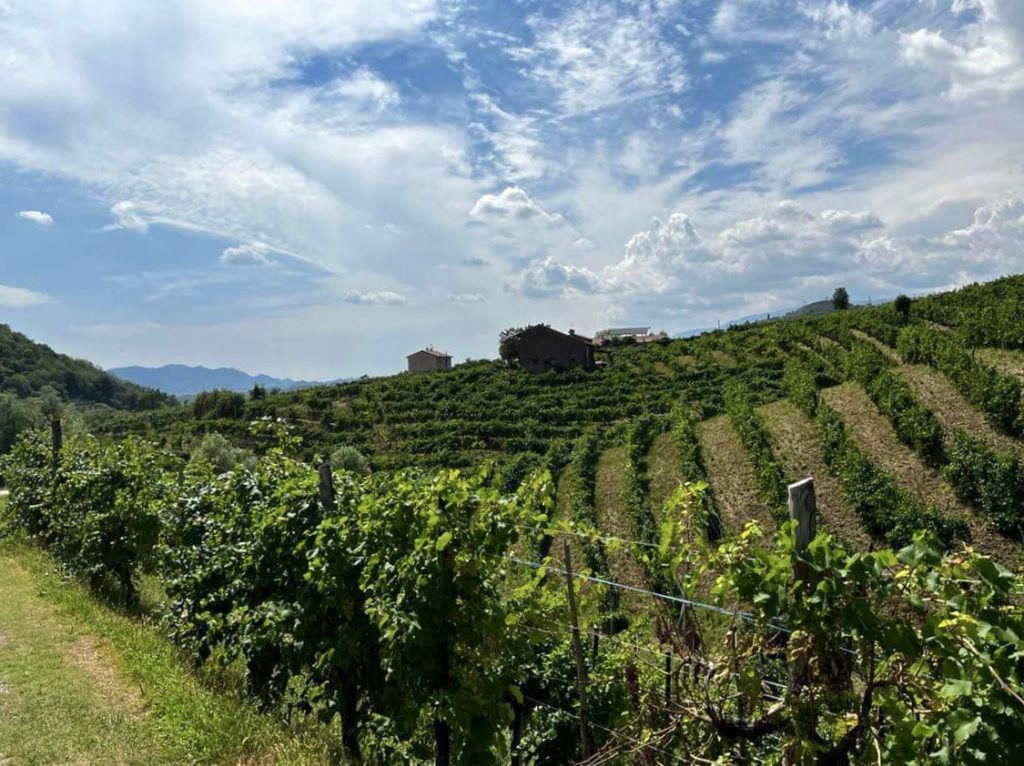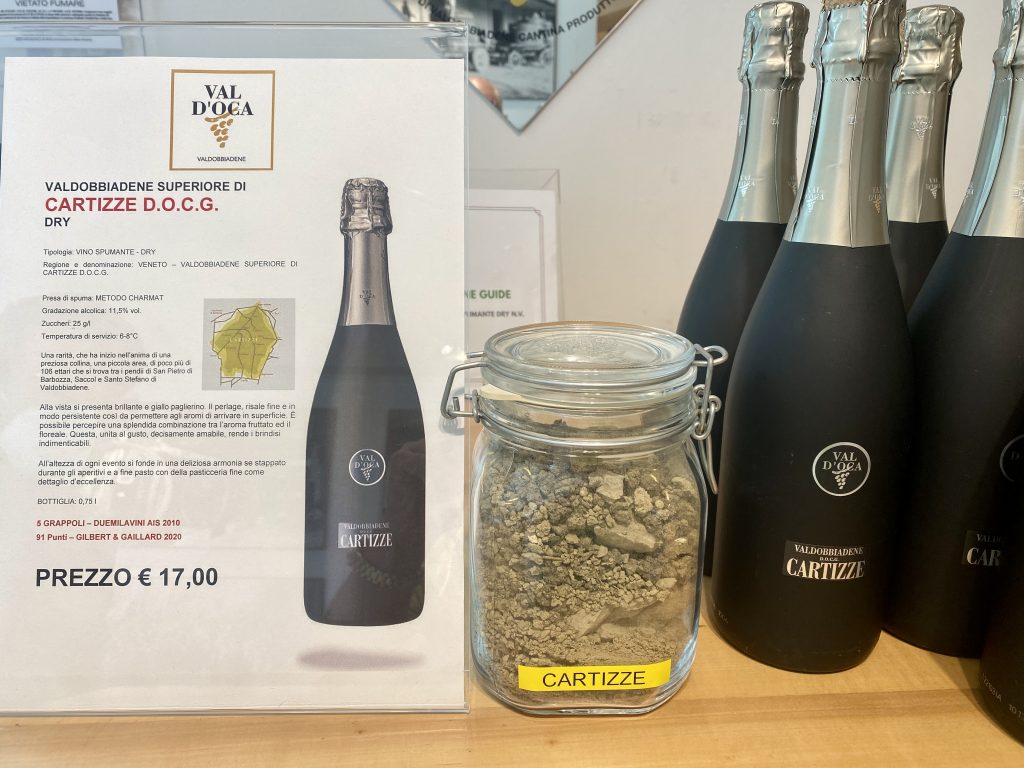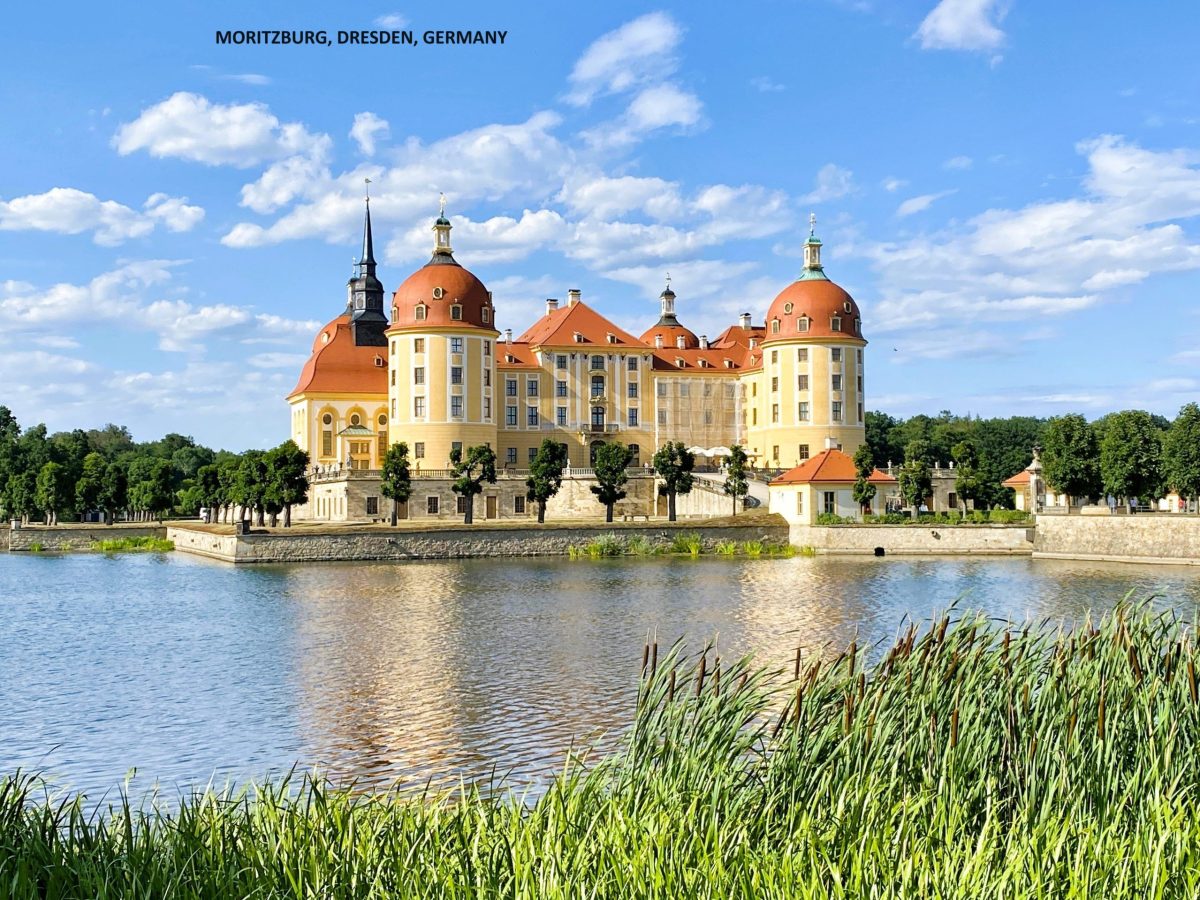This blog on Valdobbiadene follows on from that of Asolo where I first enjoyed a Prosecco wine. The blog could just as easily have been entitled ‘Prosecco Hills’ or even ‘Prosecco Road’ because much of our day was spent driving through the hills in this area and we paused in Valdobbiadene only to sample different wines but, it was in Valdobbiadene that I really started to appreciate Prosecco. Valdobbiadene it is then.
Our travels across the Prosecco Hills took us from where we were camped at Borso de Grappa to Asolo and then on through Maser, Cornuda, Covolo, Vidor, Valdobbiadene, Miane, Follina, Cison di Valmarino to Revine Lago ( I wonder how long it will take before some or all of these villages become Borghi piu belli d’Italia). We were hoping to give the dogs a swim in the lakes up at Revine Lago but it wasn’t to be and we returned to Valdobbiadene via Conegliano, taking in much of the Prosecco Road as the route between Conegliano and Valdobbiadene is now known.
Except for the Prosecco Road, which term seems to be known by only a handful, there is no obvious tourist structure to this area although it will probably not be long coming. The fact that the Prosecco Hills were recognised by UNESCO as a World Heritage Site in 2019 will no doubt help (especially once Covid becomes a dim distant memory) but whatever happens Vanya and I are agreed, we haven’t seen such fabulously beautiful wine country anywhere in the world. The steep irregularly shaped hills are a patchwork of picturesque vineyards; squeezed into a series of verdant terraces, interspersed with a mixture of thick hedgerows and small woods. This rolling sea of green stretches in all directions and is broken only by a faint string of whitish grey stone farmhouses and, very occasionally, a majestic Venetian style villa. Like I said, neither of us have ever seen such fabulously beautiful wine country and just driving through it was an experience.


And so to Valdobbiadene, where we were properly introduced to Prosecco wine by Enrico from Venice who had previously lived in Cirencester and spoke remarkably good English. I was driving and so it was Vanya who took the lead with the wine tasting. I was allowed only the barest sip of those wines she considered suitable and, even then, I chose to stay away from the driest of them. Indeed, my winner was probably the sweetest of all those we tasted – it was the Dry (as opposed to Very Dry, Brut or Very Brut) Val D’Oca Cartizze which vines, I am told, are on the steep south facing slopes of the Cesen Mountain or, as Enrico said, “where the hills are the steepest and most beautiful”. We bought three bottles and some others which Vanya favoured.

I’ll not go into too much detail (you can always use google to properly research the matter) but, in case you are interested, there follows a little bit about the production of Prosecco.
Prosecco is a sparkling white wine from Italy (although it can be flat or have very few bubbles – tranquilo or frizzante). It differs totally from Champagne or Cremant, both of which are produced in France. Firstly, the ingredients are different. Chardonnay, Pinot Noir and Pinot Meunier grapes are used to make both Champagne and Cremant while the Glera grape is used in Prosecco. Secondly, different methods are used to get the bubbles into the wine. The traditional approach is adopted for Champagne and Cremant, where yeast goes to work in each individual bottle while, with Prosecco, the bubbles are added to large tanks of developing wine and it is bottled much later. So, both the ingredients and the (production) method in these two ‘recipes’ are totally different – which makes for totally different drinks.
Only other point I would make is that, just as is in France, Italy operates a system for determining how good their different wines are (so as to highlight wines of a particular and/or superior quality) and Prosecco is subject to that same Italian classification system. Italy operates three classes being ITG, DOC and DOCG. ITG is reserved for all wines that may not meet all of the standards of a DOC or DOCG wine but are nevertheless considered to be of good quality. DOC wines have to meet stricter standards to earn their classification. DOCG standards are higher still and therefore the quality is even better. The following chart identifies how the different Proseccos are classified across the Prosecco wine producing region:-

Just read all the above. Bloody hell, this is a dry old blog! Sorry, trying to catch up because I’m about a week behind. I’ll try and introduce something more personal next time; a bit of levity wouldn’t go awry.

